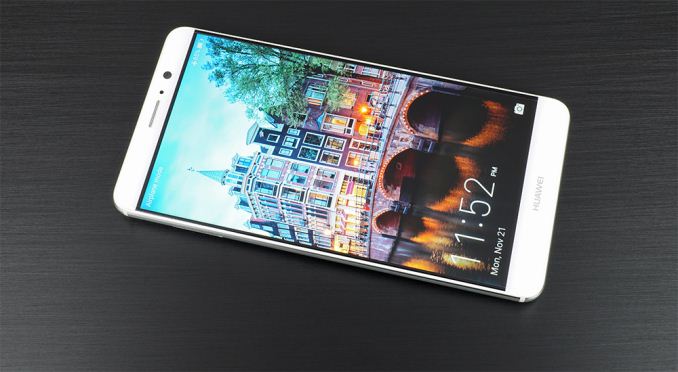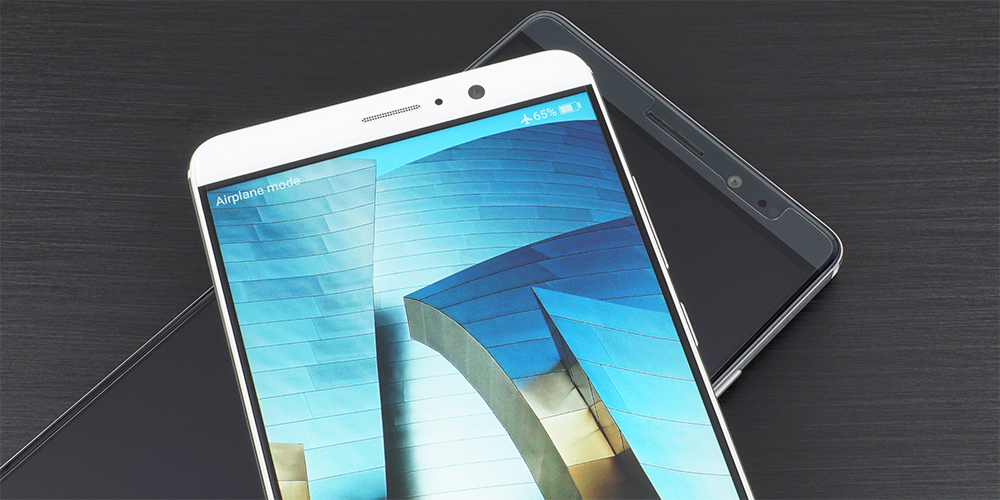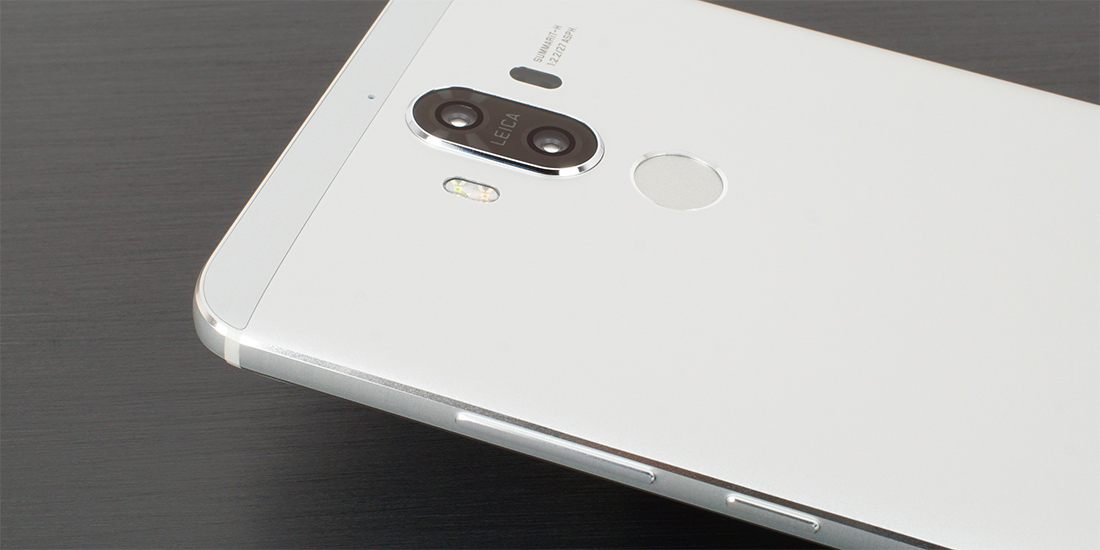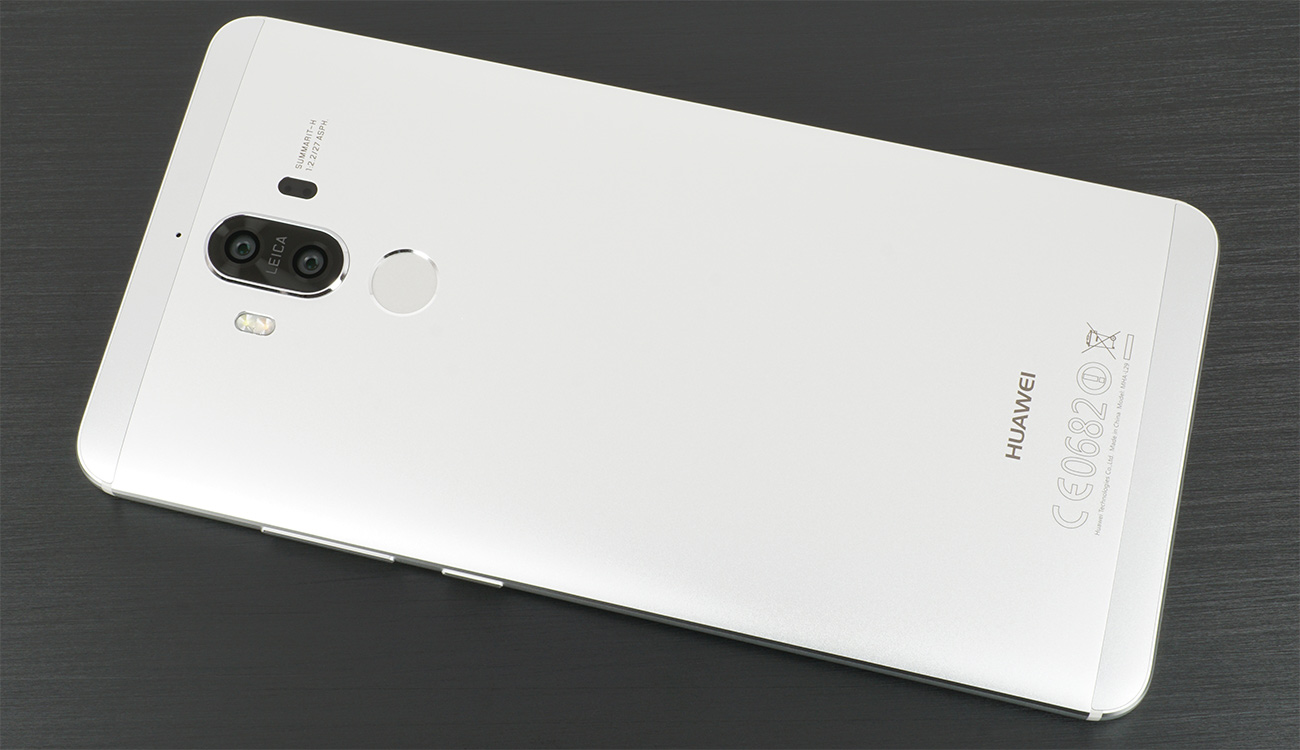The Huawei Mate 9 Review
by Matt Humrick on January 27, 2017 7:00 AM EST
Flagship phones give manufacturers the opportunity to showcase their latest technology, and because they attract attention and generate buzz, they help raise brand awareness. For Huawei, currently the world’s third largest smartphone producer by market share, its Mate series of phones is the pinnacle of what the company has to offer. And while the Mate 9, the successor to the Mate 8 that we looked at in-depth last year, packs some high-end hardware, Huawei recognizes it takes more than an impressive spec sheet to win the premium smartphone battle; it needs to provide an overall experience and image that matches the phone’s premium price.
Performance and responsiveness are important for any phone, but essential for a flagship like the Mate 9. Making its debut inside the Mate 9’s aluminum chassis is HiSilicon’s new Kirin 960 SoC. The four ARM Cortex-A72 CPUs in the Mate 8’s Kirin 950 have been replaced by four of ARM’s latest Cortex-A73 CPUs. The plus-one change in model number is deceptive, however, because there are some significant differences between the two cores. The A73 actually belongs to a different processor family, with its roots going back to the A17 rather than branching out from the A15/A57/A72 family tree. One of the obvious differences between the two different microarchitectures is a reduction in decoder width: The A72 has a 3-wide decoder while the A73 is 2-wide. Despite what appears to be a reduction in capability on paper, ARM claims the A73 still offers better performance and efficiency relative to A72 on the same process and frequency. Four Cortex-A53 cores complete the big.LITTLE CPU configuration.
The Mate 9’s CPU cores reach higher peak frequencies than those in the Mate 8 too, but the differences are small. The A53 cores get a negligible increase from 1.80GHz to 1.84GHz, while the A73 cores reach up to 2.36GHz versus the 2.3GHz for the Kirin 950’s A72 cores. It’s interesting that Kirin 960’s A73 cores are clocked lower than the Kirin 955’s 2.5GHz A72 cores, especially considering that ARM targets a peak frequency of 2.8GHz on 16nm (the Kirin 960 uses TSMC’s 16FFC FinFET process). With the Kirin 960, HiSilicon is more focused on reducing power consumption (and freeing up thermal headroom for the GPU) instead of chasing maximum CPU performance. Still, based on the A73’s other advantages, particularly the improvements to the memory subsystem, the Kirin 960 should still show a small performance gain relative to Kirin 950/955.

Mate 8 (bottom) and Mate 9 (top)
Perhaps the biggest criticism of past Kirin SoCs were their seemingly underpowered GPUs. While Qualcomm pushed the performance and power envelope with its Adreno GPUs, and Samsung added eight- or twelve-core configurations of ARM’s latest Mali GPUs to its Exynos SoCs, HiSilicon’s Kirin SoCs made due with more modest four-core Mali configurations. Peak performance significantly trailed its peers, but Kirin’s lower power consumption limited the effects of thermal throttling (a significant problem for the faster GPUs). Ultimately, performance was “good enough” for the majority of cases.
The Mate 9’s Kirin 960 SoC marks a radical shift in HiSilicon’s GPU philosophy. Not only does it utilize ARM’s latest Mali-G71 GPU based on the all-new Bifrost architecture, but it steps up to an eight-core configuration running at an impressive 900MHz—the same peak frequency used by the Kirin 950/955’s much smaller GPU. The combination of additional cores and architectural improvements give the Mate 9 a significant peak performance advantage over the Mate 8’s Mali-T880MP4 GPU, paving the way for new capabilities such as VR.
| Huawei Mate 9 Series | |||
| Huawei Mate 9 | Huawei Mate 9 Pro | Huawei Mate 9 Porsche Design | |
| SoC | HiSilicon Kirin 960 4x Cortex-A53 @ 1.84GHz 4x Cortex-A73 @ 2.36GHz ARM Mali-G71 MP8 @ 1037MHz |
||
| Display | 5.9-inch 1920x1080 IPS LCD | 5.5-inch 2560x1440 AMOLED (curved edges) | |
| Dimensions | 156.9 x 78.9 x 7.9 mm 190 grams |
152.0 x 75.0 x 7.5 mm 169 grams |
|
| RAM | 4GB LPDDR4 | 6GB LPDDR4 | |
| NAND | 64GB (UFS 2.1) + microSD |
128GB (UFS 2.1) + microSD |
256GB (UFS 2.1) + microSD |
| Battery | 4000 mAh (15.28 Wh) non-replaceable |
||
| Front Camera | 8MP, 1/3.2" Sony IMX179 Exmor R, 1.4µm pixels, f/1.9, Contrast AF | ||
| Rear Camera | Color: 12MP, 1/2.9” Sony IMX286 Exmor RS, 1.25µm pixels, f/2.2, PDAF + Laser AF + Contrast AF + Depth, OIS, HDR, dual-tone LED flash Monochrome: 20MP, f/2.2, dual-tone LED flash |
||
| Modem | HiSilicon LTE (Integrated) 2G / 3G / 4G LTE (Category 12/13) |
||
| SIM Size | 2x NanoSIM (dual standby) (MHA-L29) 1x NanoSIM (MHA-L09) |
||
| Wireless | 802.11a/b/g/n/ac, BT 4.2 LE, NFC, IrLED, GPS/Glonass/Galileo/BDS | ||
| Connectivity | USB 2.0 Type-C, 3.5mm headset | ||
| Sensors | capacitive fingerprint, accelerometer, gyroscope, compass, ambient light, proximity, Hall effect, barometer | ||
| Launch OS | Android 7.0 with EMUI 5.0 | ||
| Launch Price | $600 US / 699 Euro | 1,395 Euro | |
The Mate 9 pairs its SoC with 4GB of LPDDR4 RAM, which is now standard for flagship phones. Internal storage is limited to 64GB, unlike the Mate 8 that offered a choice between 32GB, 64GB, or 128GB of NAND. Both the Mate 9 Pro (128GB) and Mate 9 Porsche Design (256GB) come with additional storage, and all three Mate 9 versions have a slot for a microSD card to expand storage further.
Software features and configuration are also vitally important to performance. The Mate 9, like previous Huawei phones, includes several enhancements to help apps launch faster and keep the system feeling more responsive. Huawei’s EMUI uses the F2FS filesystem and other optimizations to improve storage performance. There’s also Huawei’s “Machine Learning algorithm” that prioritizes system resources (CPU, memory, and storage) to improve responsiveness and overall performance. This feature, which runs locally on the phone, monitors app usage, taking note of which apps are used at what times, and then anticipates the user’s needs, by preloading the predicted app, for example. Android already manages memory usage, evicting background apps to free up resources for active processes, but Huawei takes this further by closing memory-intensive background apps to ensure memory is available for prioritized apps. It also uses compression to increase the amount of data held in working memory.
Before we discuss the Mate 9’s other hardware and features, let’s briefly cover its connectivity options. It supports 802.11a/b/g/n/ac Wi-Fi (2.4GHz and 5GHz), but only a single spatial stream enabling up to a 433Mbps PHY rate on a 80MHz channel. Most flagship phones (HTC 10, LG G5, Motorola Moto Z / Moto Z Force Droid, Samsung Galaxy S7, and iPhone 7 to name just a few) offer dual spatial stream MU-MIMO, so the Mate 9 is a bit behind here. It does come with Bluetooth 4.2 LE, NFC, and even an IR blaster, though.
The Kirin 960 includes a brand new HiSilicon LTE UE Category 12/13 modem that achieves speeds of up to 600 Mbps on the downlink and 150 Mbps on the uplink (2x20MHz carrier aggregation with 64-QAM). This new modem, which drops HiSilicon’s ‘Balong' branding, supports up to 8 data streams on the downlink using a combination of quad carrier aggregation (4x CA) and 4x4 MIMO (only for 2x CA). It also supports up to 256-QAM but not on all 8 streams. This gives it some flexibility in how it achieves its maximum throughput: (2x20MHz CA + 4x4 MIMO at 64-QAM) or (4x20MHz CA + 2x2 MIMO at 64-QAM).
| Frequency Band Support | ||
| MHA-L09 | MHA-L29 | |
| FDD-LTE | 1 / 2 / 3 / 4 / 5 / 7 / 8 / 9 / 12 / 17 / 18 / 19 / 20 / 26 / 28 / 29 | 1 / 2 / 3 / 4 / 5 / 7 / 8 / 9 / 12 / 17 / 18 / 19 / 20 / 26 / 28 / 29 |
| TDD-LTE | 38 / 39 / 40 | 38 / 39 / 40 / 41 |
| GSM | 850 / 900 / 1800 / 1900 MHz | 850 / 900 / 1800 / 1900 MHz |
| WCDMA | 1 / 2 / 4 / 5 / 6 / 8 / 19 | 1 / 2 / 4 / 5 / 6 / 8 / 19 |
| CDMA | - | BC0 (China Telecom) |
| TD-CDMA | 34 / 39 | 34 / 39 |
This modem gains another new capability: It now supports CDMA, which is important for carrier compatibility in China, and puts HiSilicon in the same group as Intel, MediaTek, and Qualcomm for global network support. This modem represents a significant investment by HiSilicon, because it uses a completely new, custom design that does not use CEVA LTE IP like previous Balong modems.
There are two different models of the Mate 9. The MHA-L09 model uses a single NanoSIM and does not support CDMA networks. The MHA-L29 model supports Dual SIM Dual Standby (DSDS), although one NanoSIM slot is shared with microSD, so it can use either two NanoSIM cards or one NanoSIM and one microSD card. The second SIM supports 2G/3G operation using GSM (850/900/1800/1900MHz), CDMA (BC0), and WCDMA (1/2/4/5/6/8/19).












84 Comments
View All Comments
Matt Humrick - Friday, January 27, 2017 - link
This is why I like to see OEMs include multiple screen modes or other methods to adjust display parameters, and why I take the time to test and show the results for them in my reviews.Ethos Evoss - Thursday, February 23, 2017 - link
really only shame is huawei not bothering optimising video recording .. compare to galaxy 6 or 7 crapstuttering when moving from right to left ... on old iphone 6 and old galaxy s6 video recording at 1080p60 is simply the best ..
beepboopbop - Friday, January 27, 2017 - link
The biggest benefit I see from a perfectly calibrated display is that you'll be seeing media as it was meant to be seen.mrvco - Friday, January 27, 2017 - link
What media is "meant" to be seen on a tiny mobile phone screen?akdj - Tuesday, January 31, 2017 - link
Maybe the picture you take or video you attempt to capture... and 'edit' - possibly the movie you watch (5.9" after all! With speakers to boot) or the photos you view, games you play, video calls you make, there's even apps that will allow for capturing colors for Adobe profiles (for creatives) -- More and more folks' phones have become significantly more, for many... it's their primary computerAnd IMHO, with so many OEMs delivering accurate displays today, crappy ones tend to stand out and make it nearly impossible to use that phenomenal camera to it's full potential
Nitemare3219 - Friday, January 27, 2017 - link
The "average consumer" isn't checking Anandtech for reviews. I truly appreciate the color accuracy testing. Having at least a SOMEWHAT color accurate display is appreciable, once you actually use one. Some devices have colors that are way, way off and things just look ridiculous.BrokenCrayons - Friday, January 27, 2017 - link
One of the things Anandtech does in reviews that's different from most other tech sites is in-depth display analysis of all the deivces (those with displays anyhow) that they handle. Although someone like me that uses a computer to write books and fetch e-mail isn't concerned about such things, I think a pretty big percentage of AT's readers care quite a bit. Plus, putting attention on display quality may encourage device manufacturers to focus more on that sort of thing over time.If it's not important to you, just skip those portions of the review. That's what I usually do with screen testing portions.
GC2:CS - Friday, January 27, 2017 - link
I think the number one most underrated feature on display is AR coating.For me iPhone 7 - higher brightness OK, better efficiency - superb, more saturation - great.
But a AR coating even on the level 2014 iPad Air 2 would enhance all those measures much further.
It should be noted more by the reviewers.
Meteor2 - Friday, January 27, 2017 - link
This is true. The anti-reflective coating makes a bigger difference to usability outdoors than screen brightness. The iPad Air 2 and Pro really excel there.lopri - Friday, January 27, 2017 - link
There is not much else to talk about this phone's display. This is a plain old LCD with inaccurate colors. All other LCD shortcomings apply as well. High brightness is nice but that cannot replace the versatility of high contrast (e.g. AMOLED).